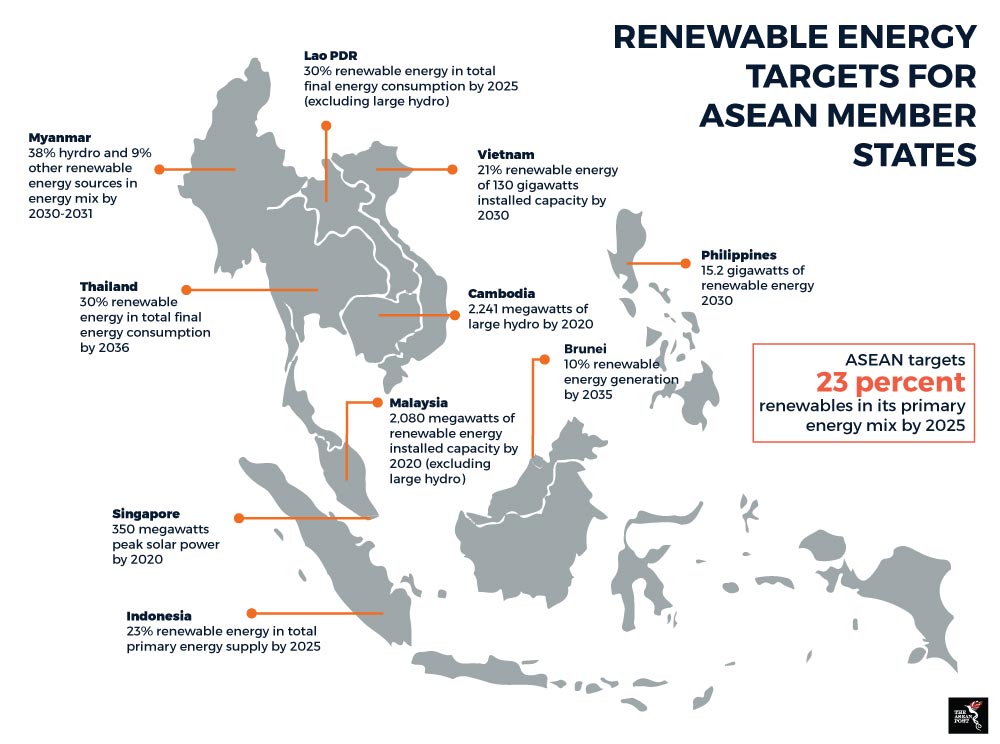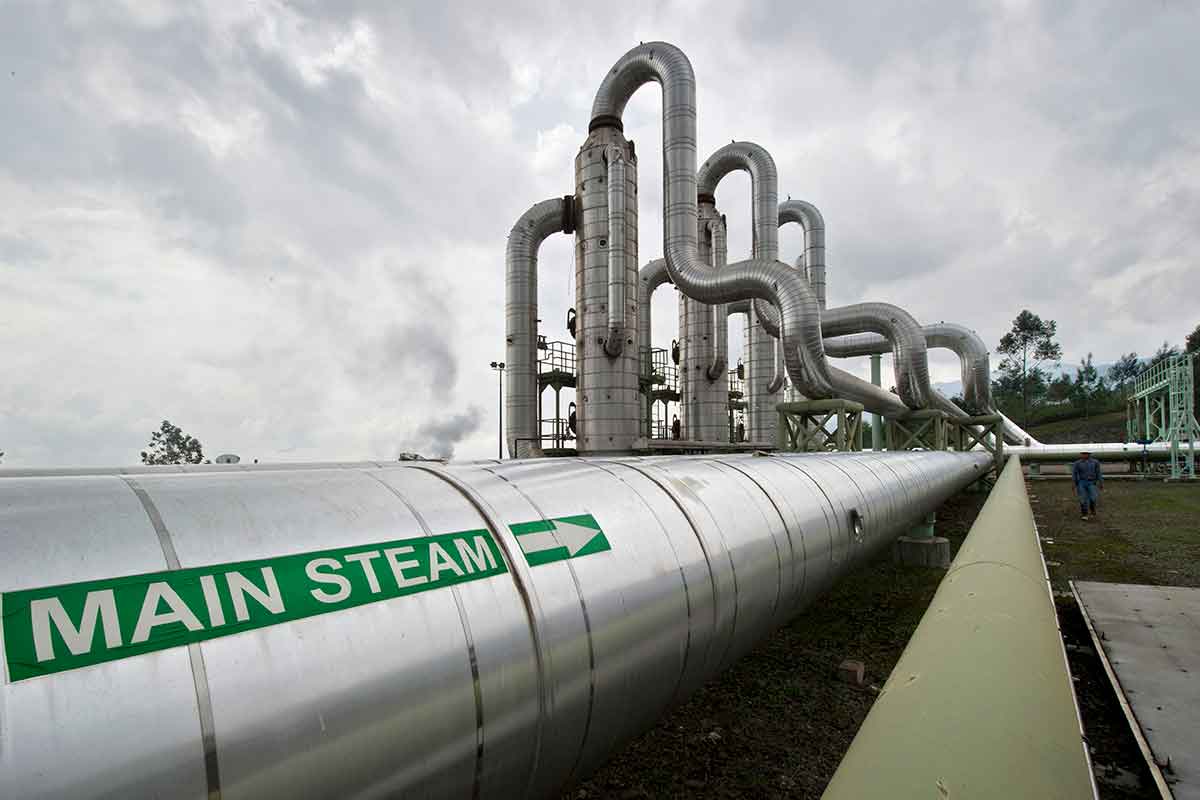Member states of the Association of Southeast Asian Nations (ASEAN) bear minimal historical responsibility for global carbon emissions but are equally suffering the impact of climate change as its effects on the world become more apparent. True ‘climate justice’ was needed and in December 2015, with the adoption of the Paris Agreement by 195 countries, justice was served.
Leaders of the world pledged to counteract the threat of climate change by ensuring the worldwide temperature rise was limited to below two degrees Celsius above pre-industrial levels – perhaps even by 1.5 degrees Celsius in the best-case scenario. It was a monumental step taken in the right direction towards formulating a global response to combat the climate change pandemic with a pledge also by industrialised states to help industrialising and developing nations achieve their climate goals.
ASEAN-5 goals towards realising the Paris climate accord
As ASEAN is a still-developing region, emission levels have been relatively high in recent history and in that sense, all eyes will turn to the rapidly industrialising nations of the ASEAN-5 (Indonesia, Malaysia, the Philippines, Thailand and Vietnam). The Asian Development Bank (ADB) projected 2018 economic growth rates of these five economies to average at 5.5 percent, slightly higher than the 5.1 percent regional average.
The main sectors that drive economic growth in these economies like manufacturing, machinery and chemical and allied industries are energy intensive sectors which result in heavy greenhouse gas (GHG) emissions. To combat this, each ASEAN-5 country has its own national commitments to reduce their respective carbon footprints. Besides that, ASEAN member states in general are working towards realising a common regional goal of intensifying renewable energy in the region’s primary energy mix to 23 percent by 2025.

Source: Various
Indonesia, the largest economy of the 10-member association pledged to reduce emissions by 29 percent by 2030 compared to business as usual levels and that number could rise to 41 percent if it gains sufficient international support.
Malaysia, intends to reduce its greenhouse gas (GHG) emissions intensity of gross domestic product (GDP) by 45 percent by 2030 relative to the emissions intensity of GDP in 2005. This consists of 35 percent on an unconditional basis and a further 10 percent dependent upon receipt of climate finance, technology transfer and capacity building from developed countries.
Thailand aims for an unconditional 20 percent reduction in emissions by 2030, compared to business as usual levels which could increase to 25 percent, conditional upon the provision of international support.
Vietnam foresees an eight percent reduction in emissions compared to a business as usual scenario, within the same time period. This could increase to 25 percent but that is contingent upon international support. On top of that, Hanoi also pledged to increase forest cover to 45 percent.
The Philippines aims for a reduction in emissions of approximately 70 percent by 2030, relative to a business as usual scenario. However, this is also on condition of international support.
CLM economies not left behind
Of the 10 economies in ASEAN, the CLM (Cambodia, Lao PDR and Myanmar) economies are by far the fastest growing markets in the region with average economic growth rates reaching 7.4 percent according to ADB projections. As these countries aim to improve the income and living conditions of their citizenry, they become lucrative investment destinations for many foreign investors. The governments there have initiated a plethora of projects in the energy sector which aim to improve urban and rural electrification.
However, in achieving their economic goals, weak environmental regulations and policy framework open malicious doors to exploitation. Of the three, only Lao PDR does not fall in the United Nations (UN) defined category of ‘Least Developed Country’ (LDC), having graduated from that category earlier this year. Hence, these states need as much help as they can get to realise their own pledges towards global climate change ambitions.
Thus far, Lao PDR, has committed to a number of policies and actions designed to reduce emissions. Cambodia aims to reduce emissions by 27 percent below a business as usual scenario by 2030, with an additional target to increase forest cover to 60 percent of national land area by 2030. Myanmar, while not explicit in its aims to reduce carbon emissions, still pledged steps to reduce its carbon footprint by increasing hydropower capacity to 9.4 gigawatts (GW) by 2030, achieving rural electrification based on at least 30 percent renewable sources and increasing forested area to 30 percent by 2030.
Brunei, Singapore on different pages of the same book
Brunei and Singapore, being the most industrialised countries in the ASEAN region are faced with different challenges towards realising their contributions to the Paris Agreement.
Singapore, has been more responsive to the global fight against climate change. It has been in the forefront of technological developments including energy efficient buildings and smart grids powered by renewable sources. The island republic aims to reduce emission intensity by 36 percent by 2030 compared to 2005 levels with emissions peaking around 2030. On top of that, it intends to achieve this without international market mechanisms, though it will continue to study their potential.
Brunei’s situation differs from its industrialised ASEAN counterpart. The Bruneian economy is highly dependent on the oil and gas sector which is a heavy industry responsible for increased levels of GHG emissions. The government there is actively looking at eliminating routine flaring of associated gas which is a main contributor to carbon dioxide emissions.
Brunei aims to reduce total energy consumption by 63 percent by 2035 compared to business as usual levels. It is also bent on shying away from petroleum-reliance and looking to increase the share of power generated by renewables to 10 percent by 2035. Besides that, it also pledges to reduce carbon dioxide (CO2) emissions from morning peak hour vehicle use by 40 percent in the same time period.
This article was first published by The ASEAN Post on 20 April 2018 and has been updated to reflect the latest data.
Related articles:
Shrinking biodiversity threatens mankind
